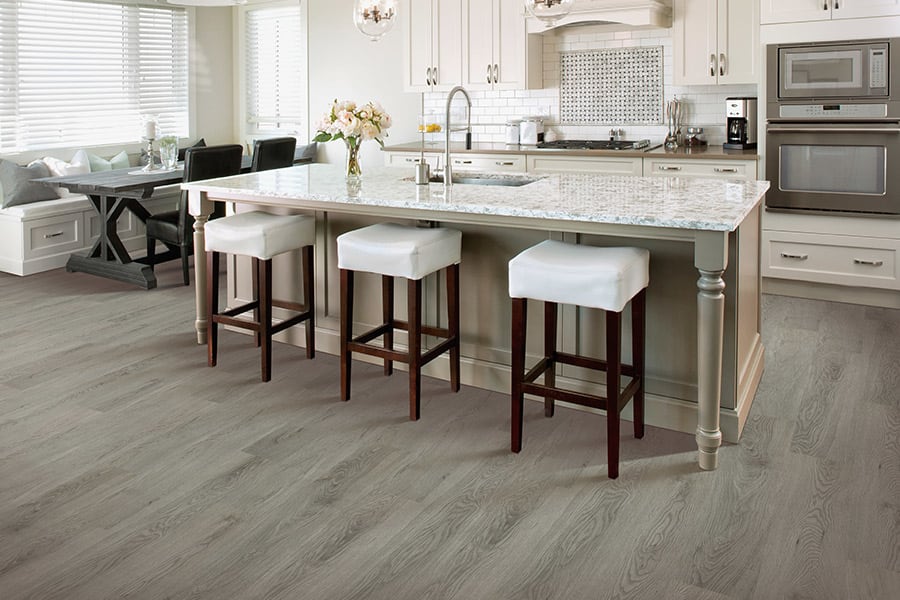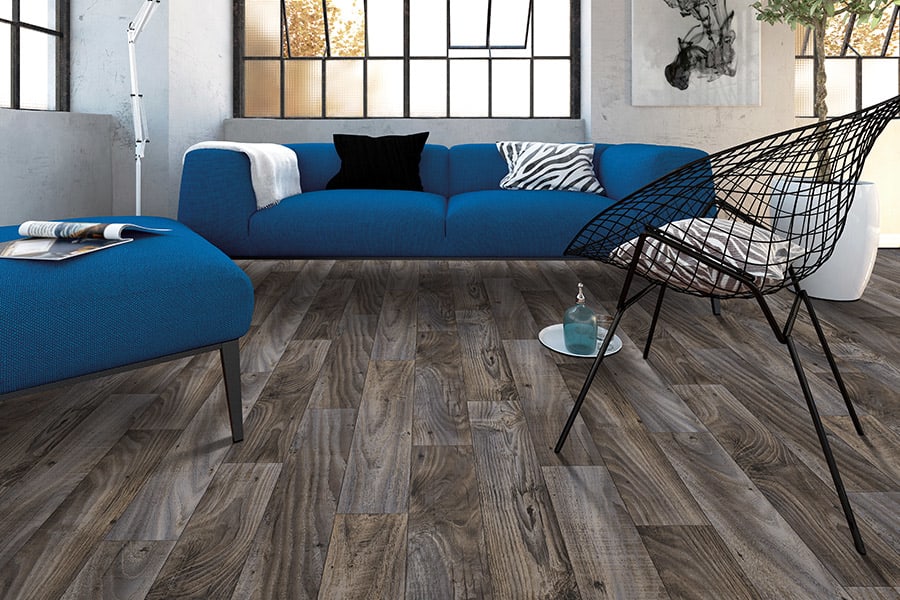What is waterproof flooring?
While you’re shopping
for new flooring, you’re thinking a lot about needs and
requirements. Waterproof flooring sounds like a great idea because
these floors are ideal for wet spaces like the kitchen, bath, and
laundry room and are also stylish enough for any room where we know
accidental spills can always occur. What does waterproof mean,
though, and is that the same as water-resistant?
100% impenetrable to liquid
To understand what
you're getting when a product is labeled waterproof, it means that it
is constructed of impervious materials and can usually be submerged
or spilled on. You might see terms like WPC (wood plastic composite)
or SPC (stone plastic composite), two technologically advanced cores
that won't ever peel or ripple, no matter how much water there is or
for how long. Water-resistant floors might repel water, but unless
it's wiped up quickly, the barrier will break, and the liquid will
soak to the core.
Waterproof vinyl flooring
This is a more advanced
version of luxury vinyl (LVF), thicker, more durable, and uses the
WPC or SPC cores. It has the same high-end look of luxury vinyl with
images taken with digital, so they're clear and vibrant. The floors
also include micro beveling and embossing to add depth, dimension,
and textured appearances.
Like LVF, the material can be cut into planks to mimic hardwood boards or groutable squares to echo stone and tile, and the floors follow all the latest trends such as gray floors, marble surfaces, and colorful encaustic-style tile patterns. They're also low maintenance, needing just a daily sweeping and periodic mopping and a simple installation, especially when installed as floating floors. Here, the pieces click together, mat, and then hover over the subfloor without nails or glue.
Like LVF, the material can be cut into planks to mimic hardwood boards or groutable squares to echo stone and tile, and the floors follow all the latest trends such as gray floors, marble surfaces, and colorful encaustic-style tile patterns. They're also low maintenance, needing just a daily sweeping and periodic mopping and a simple installation, especially when installed as floating floors. Here, the pieces click together, mat, and then hover over the subfloor without nails or glue.
Waterproof laminate flooring
For decades homeowners
have been looking for laminate installed in wet areas like the
kitchen and bath. They finally have it because a unique construction
makes the product spill-proof, eliminating staining, peeling, and
rippling concerns. Just be sure you specify whether you want the
original or waterproof version.
At Action Carpet & Floor Decor, we believe in serving our customers just as we want to be serviced. Whether you're shopping for waterproof flooring or would like to explore our other products, we hope to see you in our showroom inOceanside, CA. You'll be glad you came in; you'll not only experience our superior service but learn about our other services such as commercial and residential flooring, design consultations, and custom area rugs. We service homeowners and businesses in and around San Diego, CA, Oceanside, CA, Carlsbad, CA andSan Marcos, CA. Be sure to ask for your free waterproof flooring quote.
At Action Carpet & Floor Decor, we believe in serving our customers just as we want to be serviced. Whether you're shopping for waterproof flooring or would like to explore our other products, we hope to see you in our showroom inOceanside, CA. You'll be glad you came in; you'll not only experience our superior service but learn about our other services such as commercial and residential flooring, design consultations, and custom area rugs. We service homeowners and businesses in and around San Diego, CA, Oceanside, CA, Carlsbad, CA andSan Marcos, CA. Be sure to ask for your free waterproof flooring quote.















